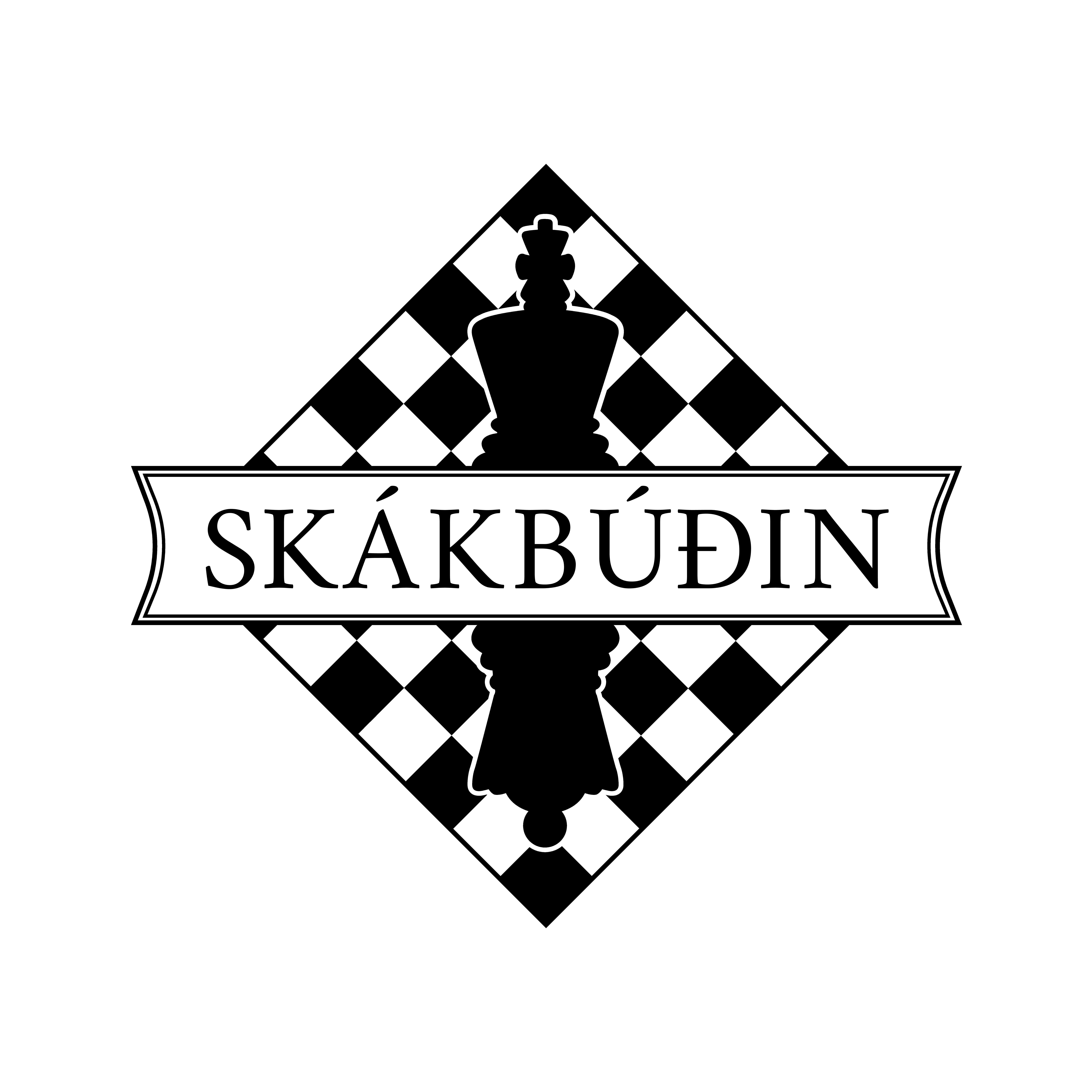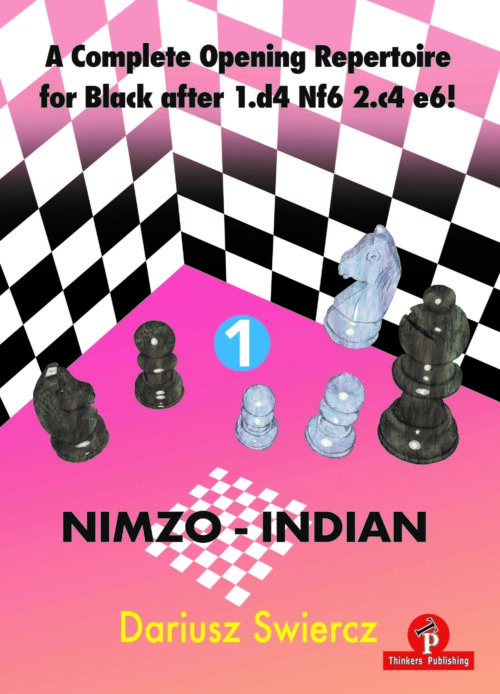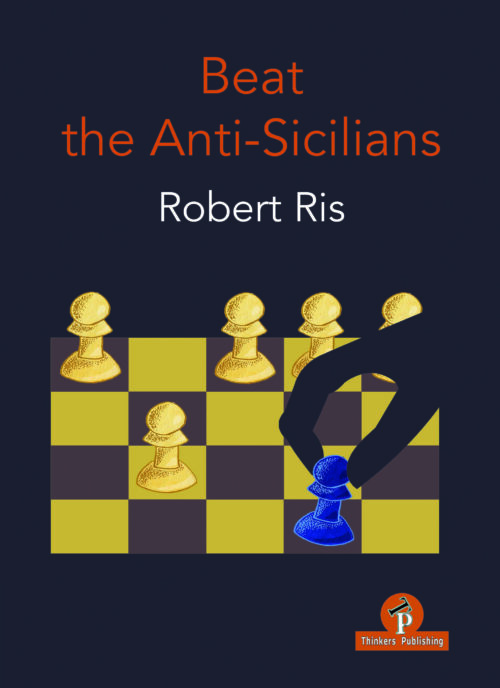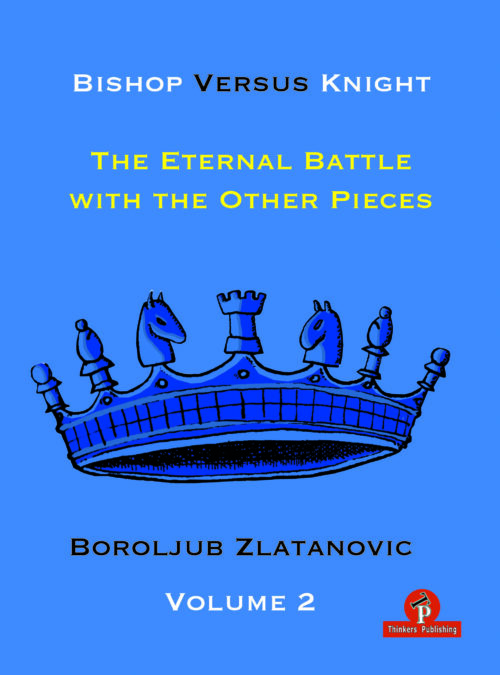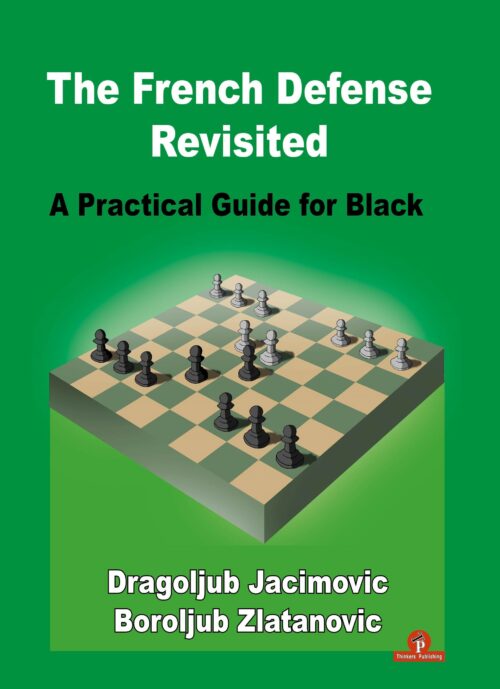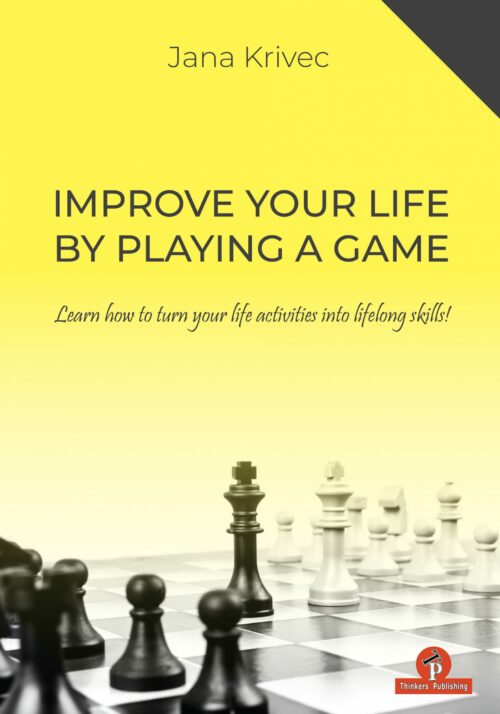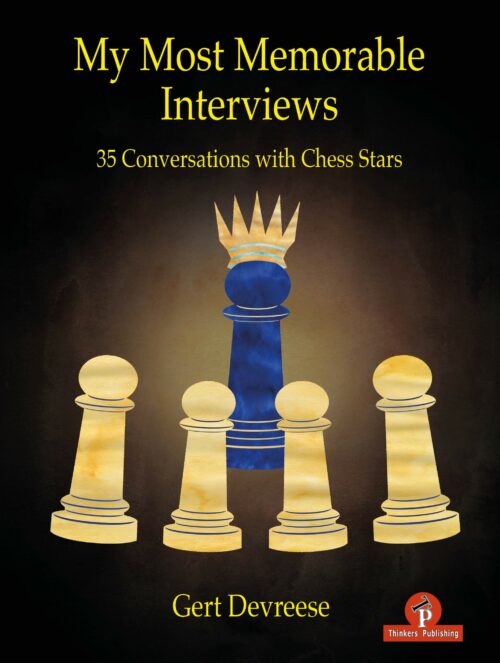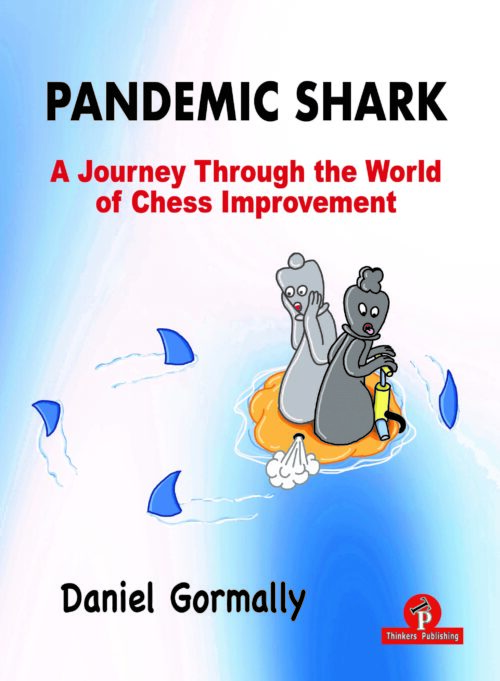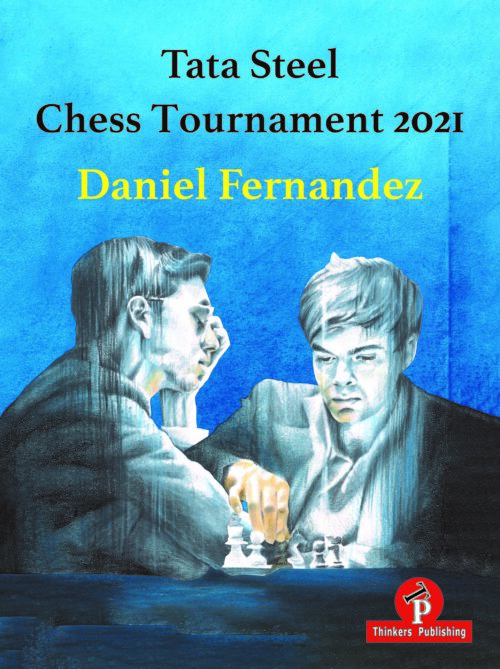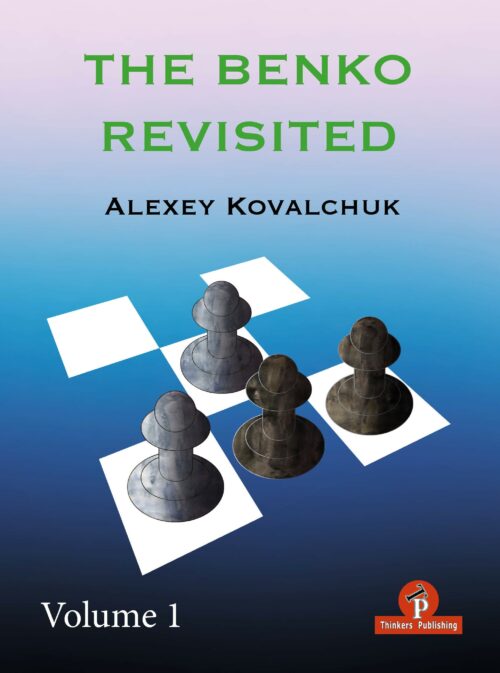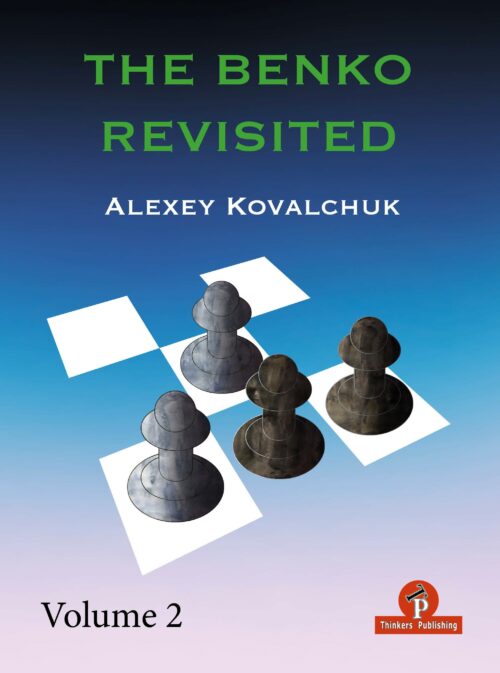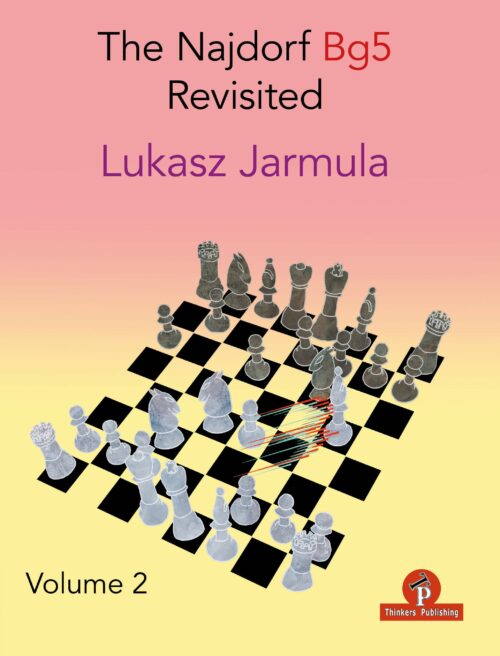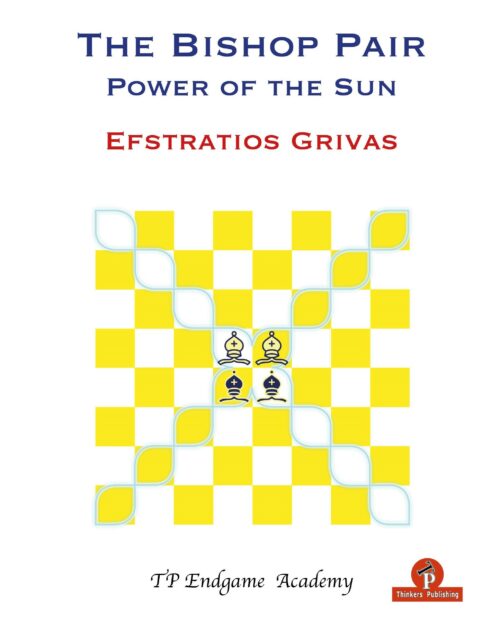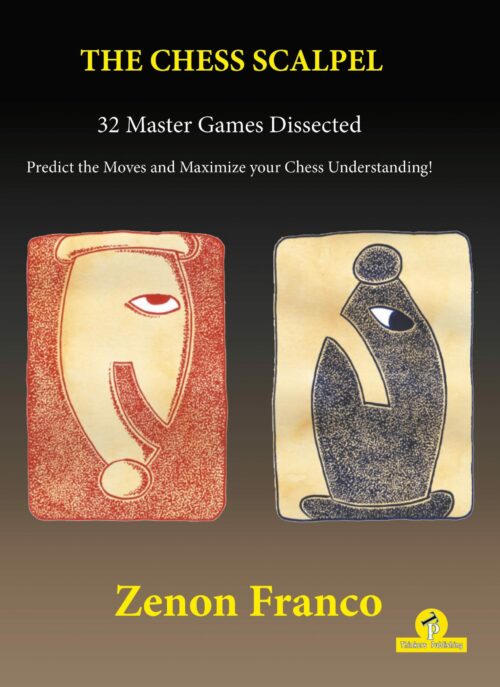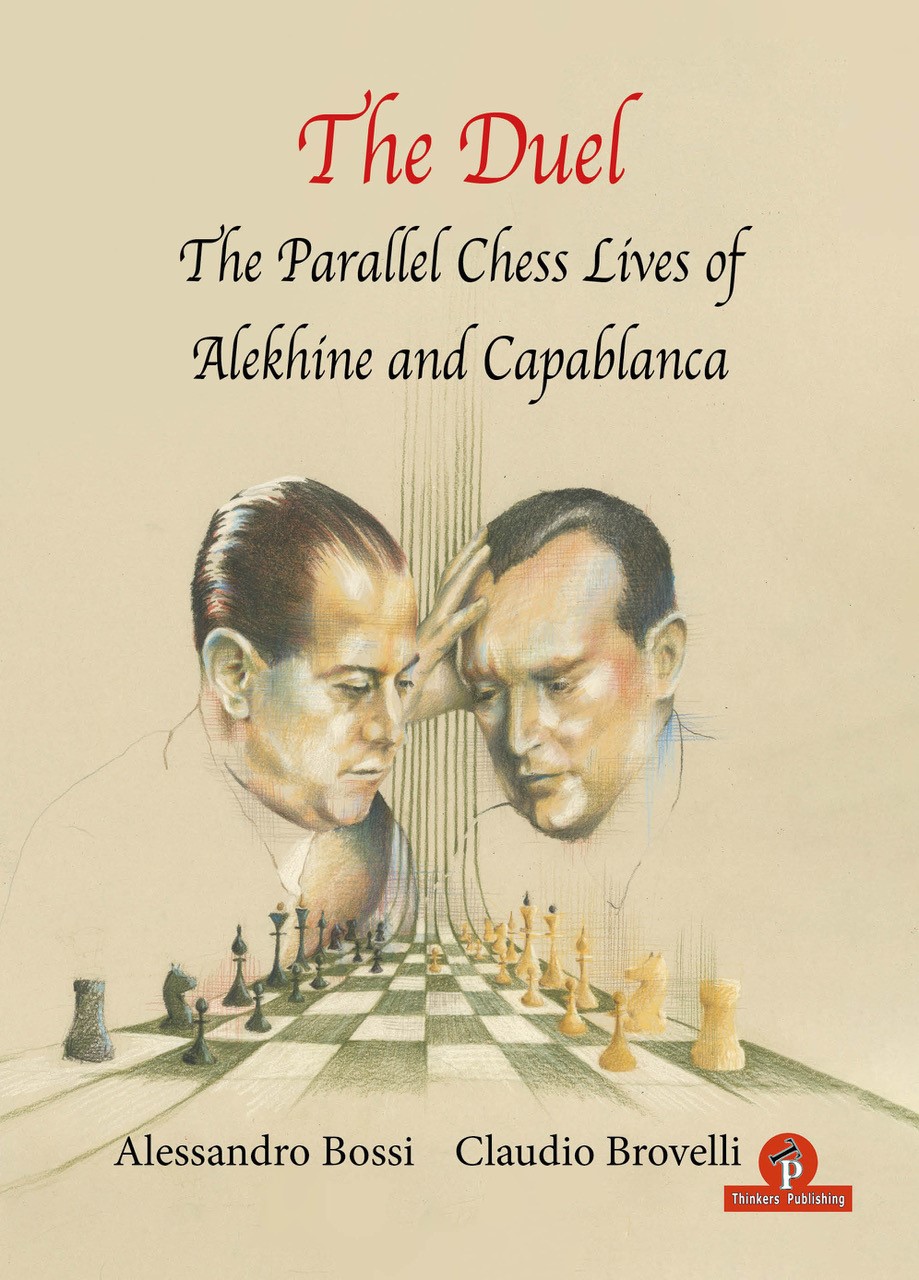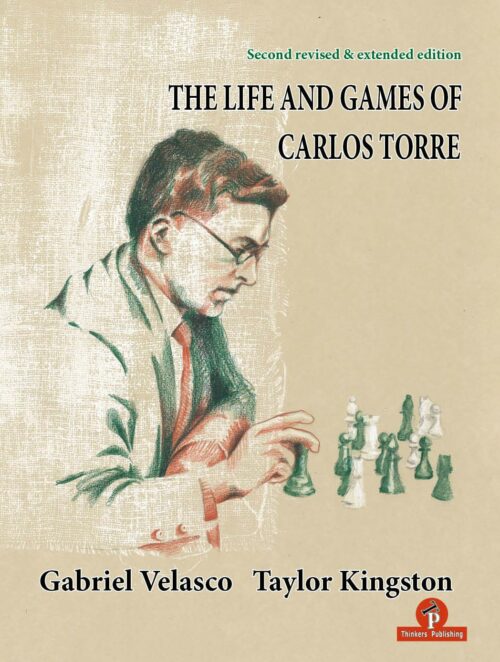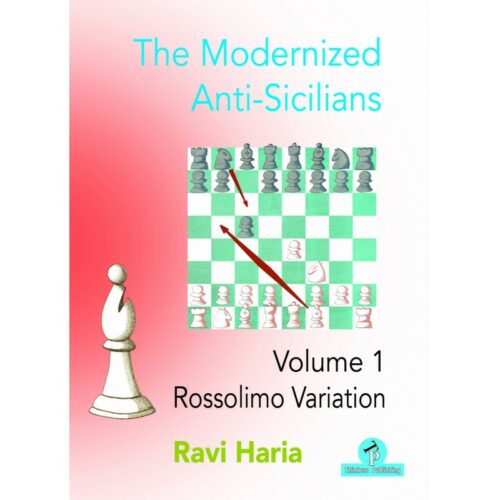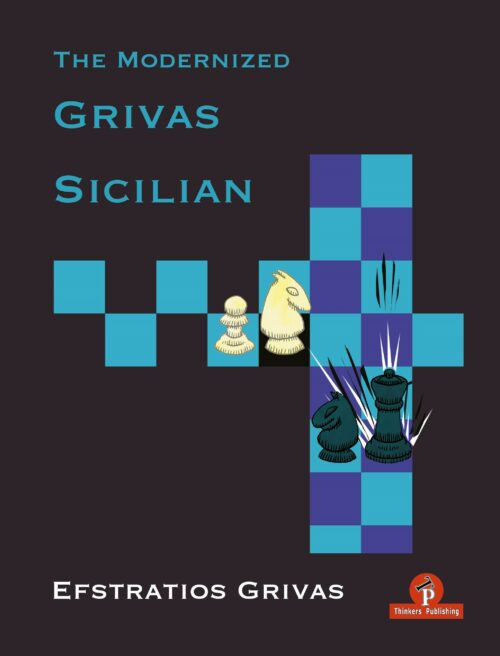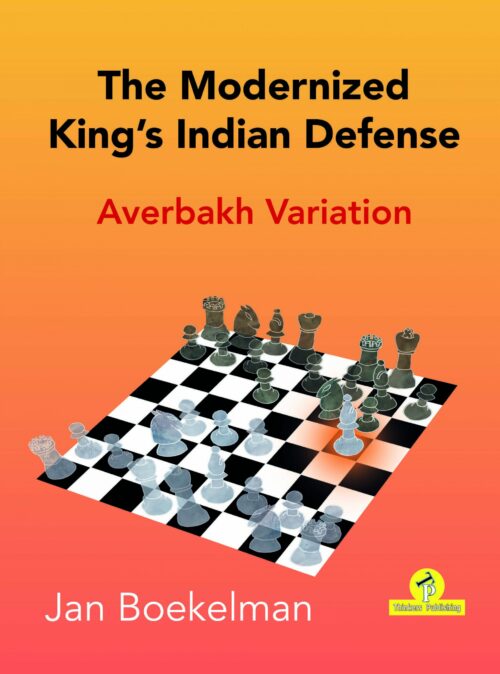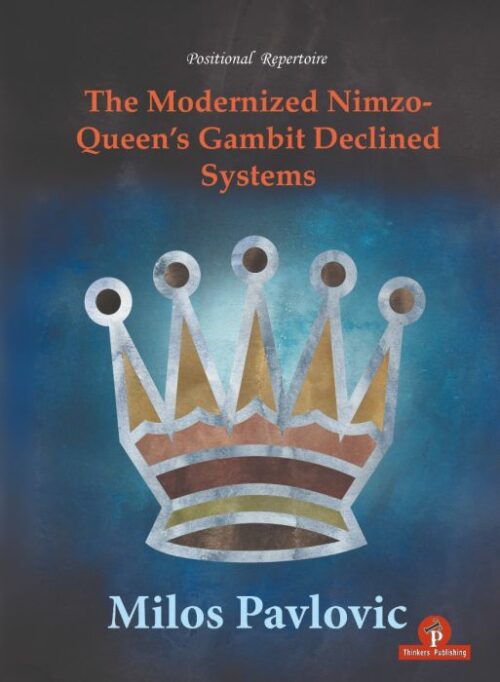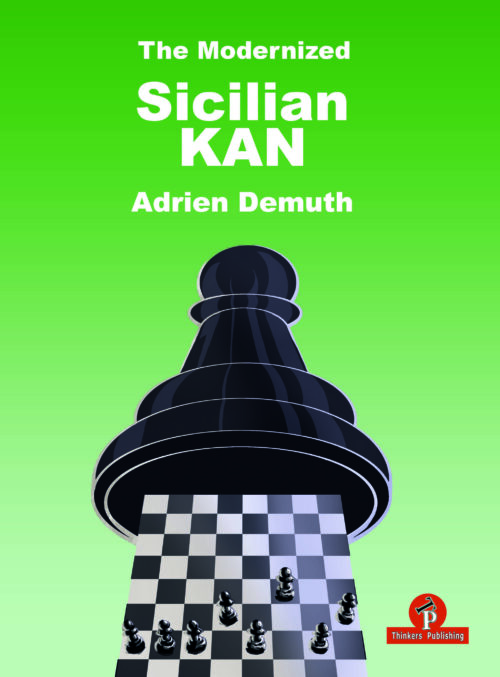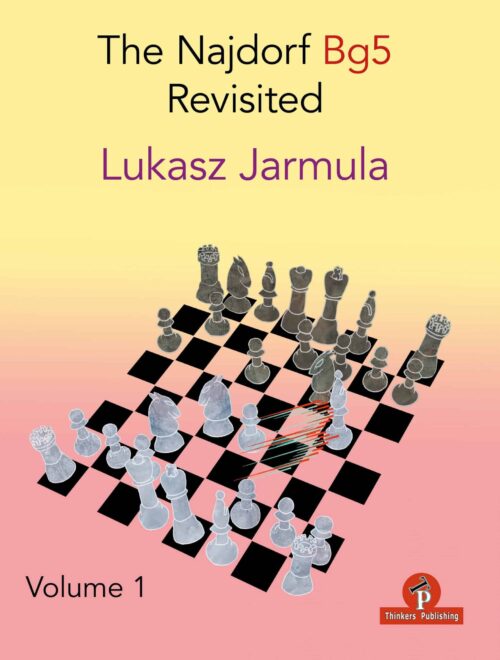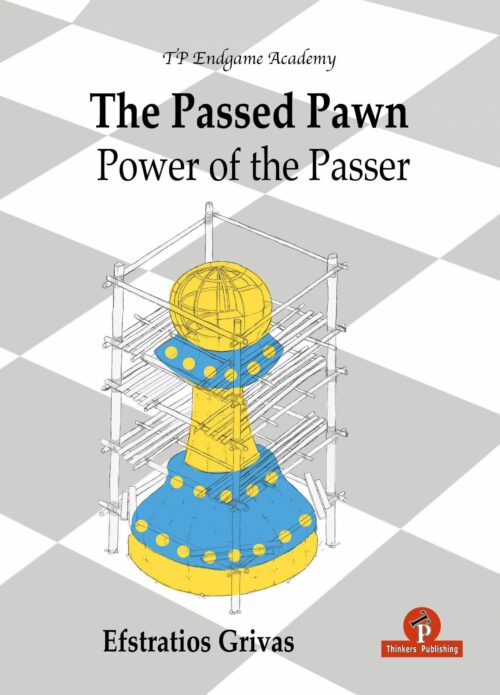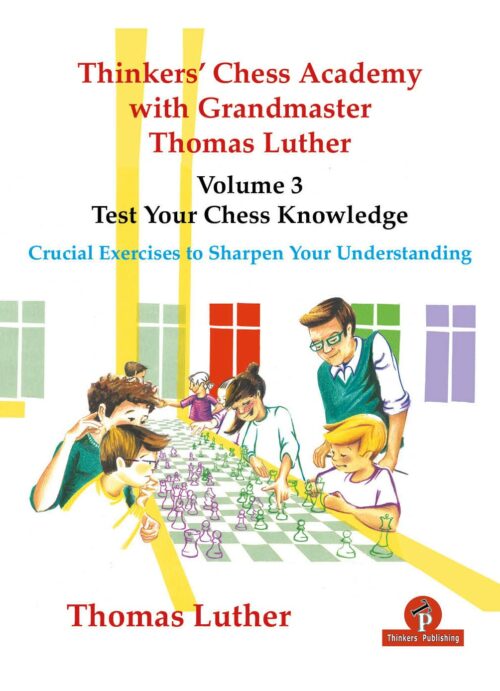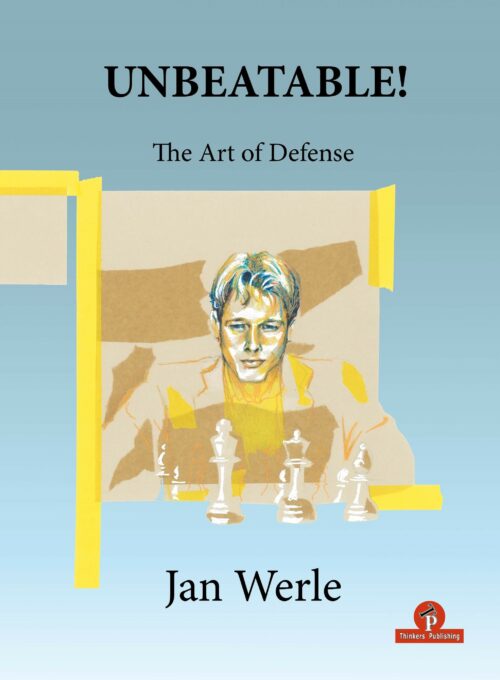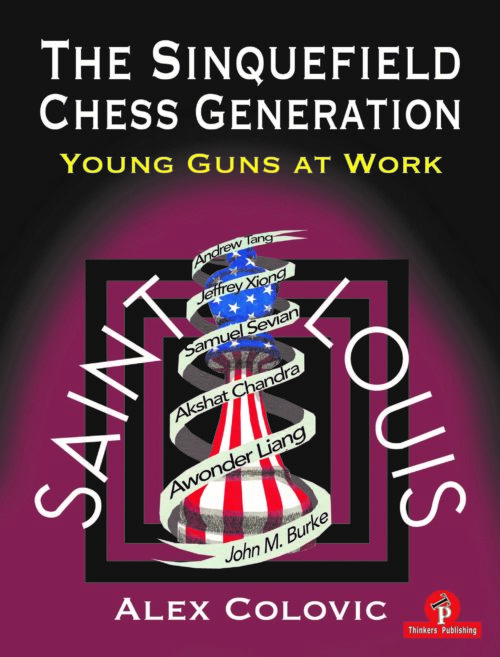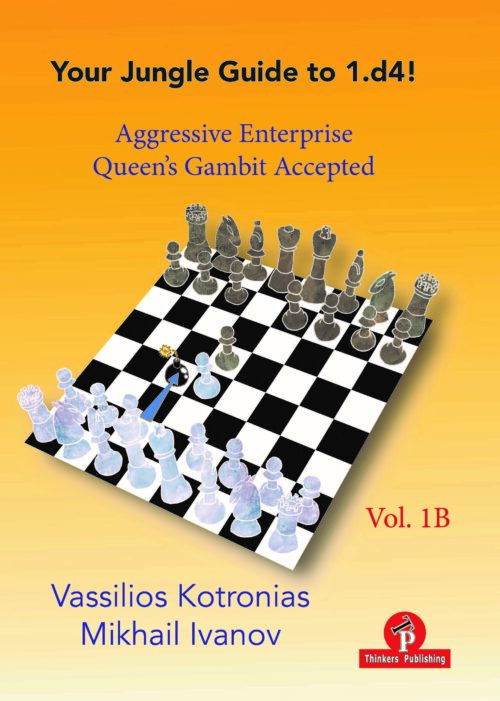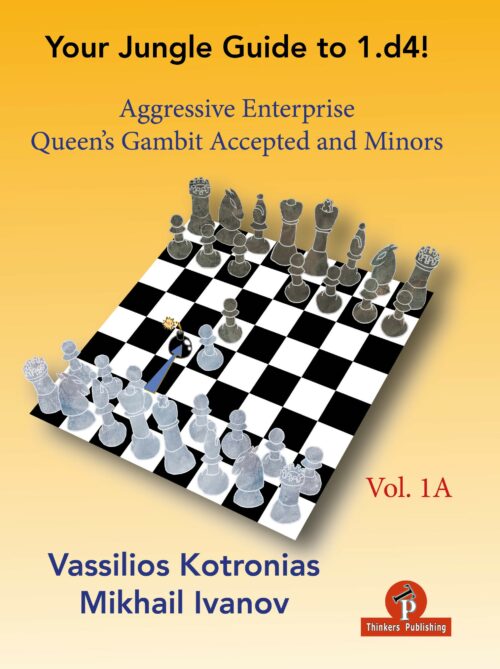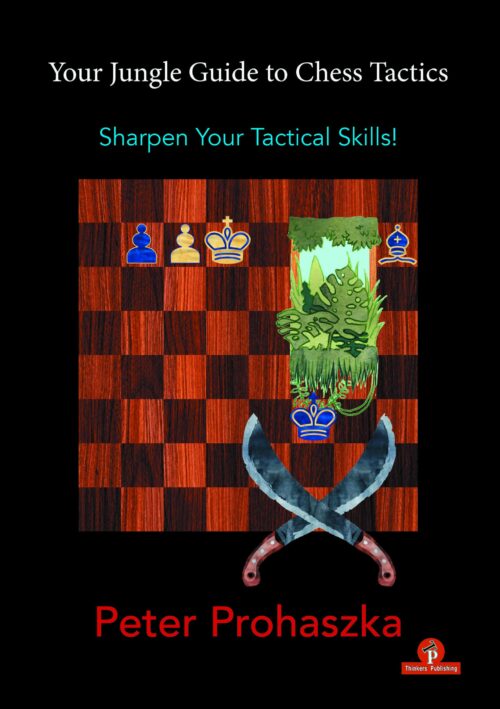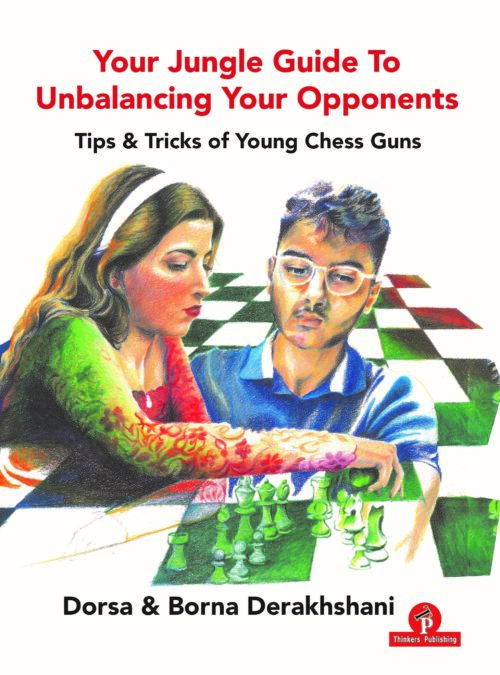-
Á útsölu!When I decided to write The Modernized Sveshnikov (June 2020) I knew that I was basically committing myself to covering the Anti–Sicilians in a separate book as well. After all, what’s a book on the Sveshnikov alone worth when your opponents decide to avoid the Open Sicilian? Especially since the Sveshnikov is nowadays considered to be one of the most reliable options for Black in the Sicilian, White players have been investigating new territories within the Anti–Sicilians. The book you are holding in your hands, Beat the Anti–Sicilians, aims to provide a complete Black repertoire against all the critical sidelines after 1.e4 c5. The biggest part of the book covers the Rossolimo and Alapin, but also the popular lines at club player’s level like the Grand Prix Attack and the Morra Gambit, and other alternatives on White’s 2nd move are also worked out in detail.
-
Á útsölu!In his new endgame series, Boroljub Zlatanovic shows a profound understanding of the most common material imbalance in chess: that of the bishop against the knight. The didactic concept of the book is admirable as well as the detailed explanations of the typical characteristics of this endgame. Despite the importance of this subject, it has received very little detailed coverage in chess literature and this encyclopedic work will definitely fill this gap and offer a lot of useful tips for practical play. ~ Alexander Delchev
-
Á útsölu!The French Defense looks to be inexhaustible and there cannot be enough books dedicated to it. This book takes a step in the direction of revitalizing our favorite opening! The authors have decided to set the book in order from the less to the more popular and complex lines.In the case of the most popular moves 3. e5, Nd2 and 3. Nc3, we decided to offer two options for Black – one aims to lead to calm play, taking care first with finding balance and equalizing. Needless to say, we wish to arm the reader in all scenarios that can arise in a game of chess, depending on their intentions, wishes, preparation, motivation level, standings et
-
Á útsölu!I like the fact that a publisher has now been found to compile his best stories. The biggest names pass by: Kasparov, Karpov, Timman, Carlsen, Polgar, Kortchnoi, Anand, Caruana, Giri, Hou Yifan… This is just a sample, all portrayed at a time when they were in the spotlight in one way or another. The power of a good interviewer is that he prepares well. And that is what Gert does. Moreover, he is also conscientious in the elaboration of his stories. He checks facts and calls or emails the interviewee if something is not clear to him or needs explanation. I hope the reader enjoys reading this book. Jeroen van den Berg
-
Á útsölu!Frábær bók um þetta stórskemmtilega mót sem lauk með óvæntum sigri! 750 bls af fróðleik og skemmtun.
-
Á útsölu!Why do I recommend my book to you, dear reader? First of all, the lines are all analyzed very deeply. You do not have to turn on the engine and wait for the computer to produce a ready-made solution. Believe me, in analyzing this book, I used the most modern equipment, and thus the reader saves a lot of time. In our information age, time is very precious, and by buying my book you will gain at least time. I have spent a huge amount of my own time analyzing the various lines, but also commenting on the options especially for you, my friends.
-
Á útsölu!Endgame theory teaches us two fundamental issues: First, how to extract the maximum from a basic theoretical position with little material, where the experts (from practice comprising thousands of games) have reached definite conclusions. Second, the way in which we can handle an endgame, depending on the material remaining on the board, and the ideas and plans we should employ. The purpose of this series is to introduce the reader to advanced training concepts, using the same methods of presentation and instruction that were taught to great players by famous trainers that they have worked with. The series will start with the topic of “the Bishop Pair” and we will examine how to handle this “power of the sun” coupling.
-
Á útsölu!The idea behind this book is for you to ‘play’ as in a real game, and it is my job to ensure you have a pleasant time while training. I suggest you take at least an hour and a half for each game and as your coach I will indicate when to guess the moves. Sometimes there will be suggestions — including tricky ones — to measure your concentration level. The ideas behind the moves are always explained. The games have been chosen according to my personal liking and commentaries are based on those by the players themselves, which is a great help in understanding what indeed happened. In some games you will have to guess moves for the losing side too. Indeed, I expect that as you proceed you will become familiar with the question of Mark Dvoretsky: “What could my opponent play?”. Importance has also been given to the practical aspect, which doesn’t always coincide with the suggestions off ered by the engines as best. This is to make it more like ‘a real game’.
-
Á útsölu!I am convinced that to cultivate the memory of the past and to study the classics is always useful and worthwhile, not least because it enables us to understand and face with greater awareness the facts and the problems of the present time. Much has already been written about the giants who have preceded us, and in particular, the Cuban, José Raúl Capablanca, and the Russo-Frenchman, Alexander Alekhine, but a new approach can surely offer different and interesting perspectives. In The Duel, Alessandro Bossi and Claudio Brovelli go deep into the lives of these two legendary World Champions, who have left their mark in an unforgettable manner on their epoch (the first forty years of the 20th century) and who remain – in part, due to their very different personalities and relationship with the game – inimitable examples for all the chess-playing generations to come. The choice to present in parallel the two biographies (in my opinion quite rightly so), shows clearly and effectively similarities and differences, not only in the style of play, but also in the approaches to life of the two protagonists. With very precise historical descriptions and presenting the events in chronological order, the authors accompany us on a journey alongside the lives of these two legends of chess. In this fashion the personalities emerge, in many ways antithetical but equally fascinating: Capablanca, friendly and charming in society, precocious, genial and nearly invincible on the chessboard, and Alekhine, who combined a wonderful talent with a capacity for work, a competitive attitude and an energy which was truly enviable. Alekhine was rational and focused in pursuing his objective to supersede his rival. The Cuban champion represented for the younger Russian player a reference and a model – firstly, to be studied from a critical and highly penetrating perspective and then to be surpassed and beaten. The fact that, after wrestling the world title from him in the year 1927, Alekhine had always refused Capablanca . The Duel, the chance of revenge will always remain a cause of regret for chess fans, but it also demonstrates that the new World Champion was fully aware of having performed a feat that was perhaps not repeatable. The many masterpieces that both of them created on the chess board, which constitute for the public their most important legacy, enrich this volume and underline key moments of their respective careers. The games are analyzed well by the authors, who enlighten the reader as to how the diverse conceptualization and the different styles of the “duelists” (the more strategic and positional of Capablanca’s versus the more aggressive and combinative of Alekhine’s) are instructive and entertaining even nowadays, for all those who love chess and who wish to improve their understanding of it. The value of this volume lies also in the parts where Bossi and Brovelli, with painstaking accuracy, have quoted both direct impressions of the two protagonists (interviews, articles, letters and quotations from their works) and evaluations (in the comments and memories of their contemporaries). In such a way, a contest of wider significance is described, which helps in understanding the characters, the period and the specific contexts. Among the witnesses emerges, in particular, Esteban Canal, the great champion of Peruvian origin who spent much of his time in Italy. He had the privilege of fighting with both Capablanca and Alekhine and becoming acquainted, if not a friend, with them. One of the authors, Alessandro Bossi, was lucky enough to come to know Canal personally and to hear directly from him of the many episodes and anecdotes described in this book. Enjoy your reading! GM Michele Godena, March 2022
-
Á útsölu!Here is what has been added to this edition:
- More accurate and extensive annotations using ChessBase and Stockfish 14.
- Torre’s own annotations to several games have been unearthed and added.
- Added games to give a more rounded view of Torre. Also the six games between players other than Torre that he annotated for the Mexican Championship tournament book.
- Many more diagrams and photographs. Also more thumbnail bios of Torre’s opponents.
- More ancillary material about Torre’s life and career: newspaper articles, pictures, anecdotes, interesting facts, opinions, trivia etc.
- A 1927 interview with Torre, published in the Yucatán magazine Anahuac.
- Excerpts from 64 Variaciones Sobre un Tema de Torre by Germán de la Cruz.
- Columns and articles from newspapers in Torre’s home town of Mérida.
- “A Clash of Opposites,” comparing and contrasting Torre with the notorious Norman Tweed Whitaker.
- The full text of Torre’s 1926 booklet Development of Chess Ability.
- A review of Torre x Torre, a fascinating documentary film.
- A more extensive, more fully informed overall assessment of Torre as a player.
-
Á útsölu!“A combination of the Queen’s Gambit Declined and Nimzo-Indian is considered one of best ways to play against 1.d4, 1.c4 or 1.Nf3.” ~ Milos Pavlovic
-
Á útsölu!“A passed pawn must be blockaded, so as to have its power restrained as much as possible. The minor pieces (knight or bishop) are ideal for this purpose, as they can rarely be forced to retreat by enemy action. On the other hand, the major pieces (queen and rook) find it difficult to achieve a stable blockade as is easy to harass them, while one must also consider that, for such valuable pieces, dealing with a mere pawn cannot be an efficient form of employment. Taking the above into account, it becomes clear that the side with the passed pawn should seek to exchange minor pieces and retain the major ones; the opposite applies to the defending side.”
-
Á útsölu!Not every reader is ambitious enough or has enough time to work very hard on his chess. That’s quite understandable and nothing to be ashamed of. You can enjoy chess very well without being a strong tournament player. You could just entertain yourself by playing through interesting combinations. In this case don’t try too hard to solve the Advanced Lessons or Master Class exercises. Have a look to make yourself familiar with the position, than look at the solution and enjoy the surprising combinations. You won’t learn as much as you would by racking your brain to crack the hard nuts. But some knowledge and experience will certainly rub off and increase your understanding of chess. I hope this book will help you to work towards your goals and let have you fun with chess, Thomas Luther, September 2022
-
Á útsölu!What you are holding in your hands is the natural follow up of Volume 1 where some “lesser” openings aft er 1.d4 d5 2.c4 were examined, as well as a couple of less popular variations of the Queen’s Gambit Accepted. This second Volume comprises all of the established main lines of the QGA aft er our recommended 3.e4 with the intention of giving you a full picture of this topical opening while helping you build a repertoire based on aggressive ideas. Objectively speaking, it is very hard for White to find an advantage in the event of the absolute main lines 3…Nf6 and 3…e5, but we believe we have done our duty. We scrutinized multiple interesting variations with the help of engines while applying our human understanding to select those lines that would be the most unpleasant for Black. Additionally, we tried to provide you with as many alternatives as possible so as not to become “victims” of a narrow repertoire.
-
Á útsölu!Grandmasters Kotronias and Ivanov are renowned as leading theoreticians and chess trainers. They offer a unique and world-class repertoire based on 1.d4! They advocate an ambitious approach for White, with the aim to fight for an advantage in any position. This is their first joint effort; they tackle the ever-popular Queen’s Gambit Accepted and their sidelines in Volume 1A and 1B. We at Thinkers believe their job could not have been done any better.
-
Á útsölu!There are two parts to this book. The first 17 chapters elaborate on the most important motifs in practical chess. The remaining 8 chapters showcase the art of attack and defense. Certain motifs feel like they belong together and the order of the chapters in which they are discussed reflects that. All 25 chapters of this book begin with an introduction which is always designed to clearly illustrate the motif or theme at hand. Most but not all of the games here are classics. All the introductions are followed by training puzzles in order to reinforce pattern recognition and learning for what has been discussed beforehand.
